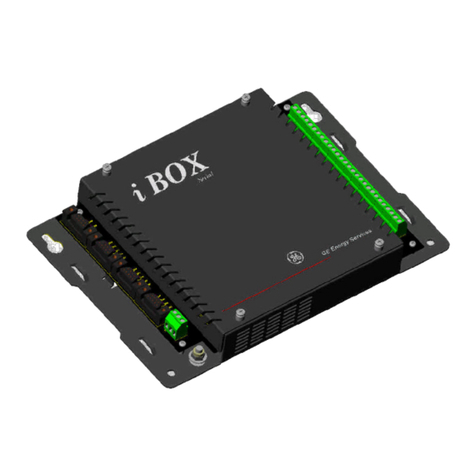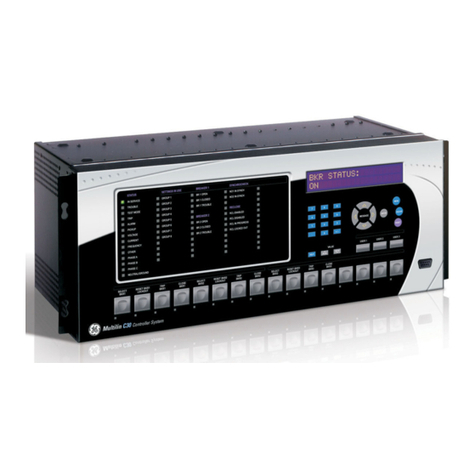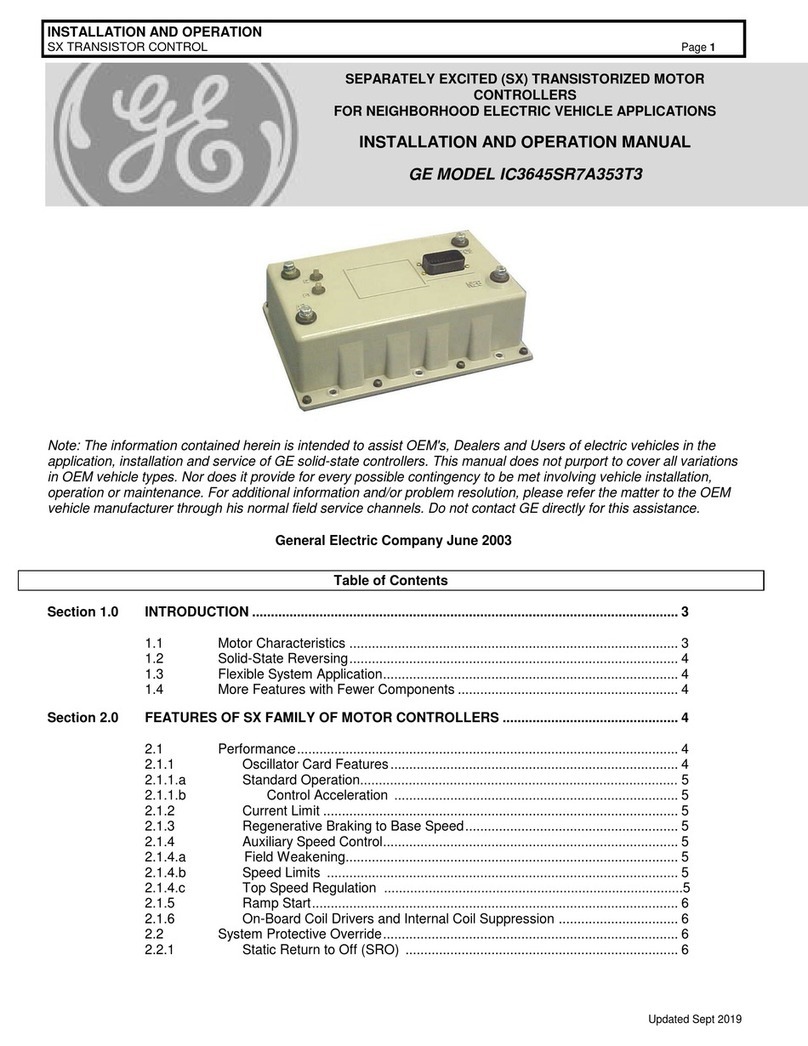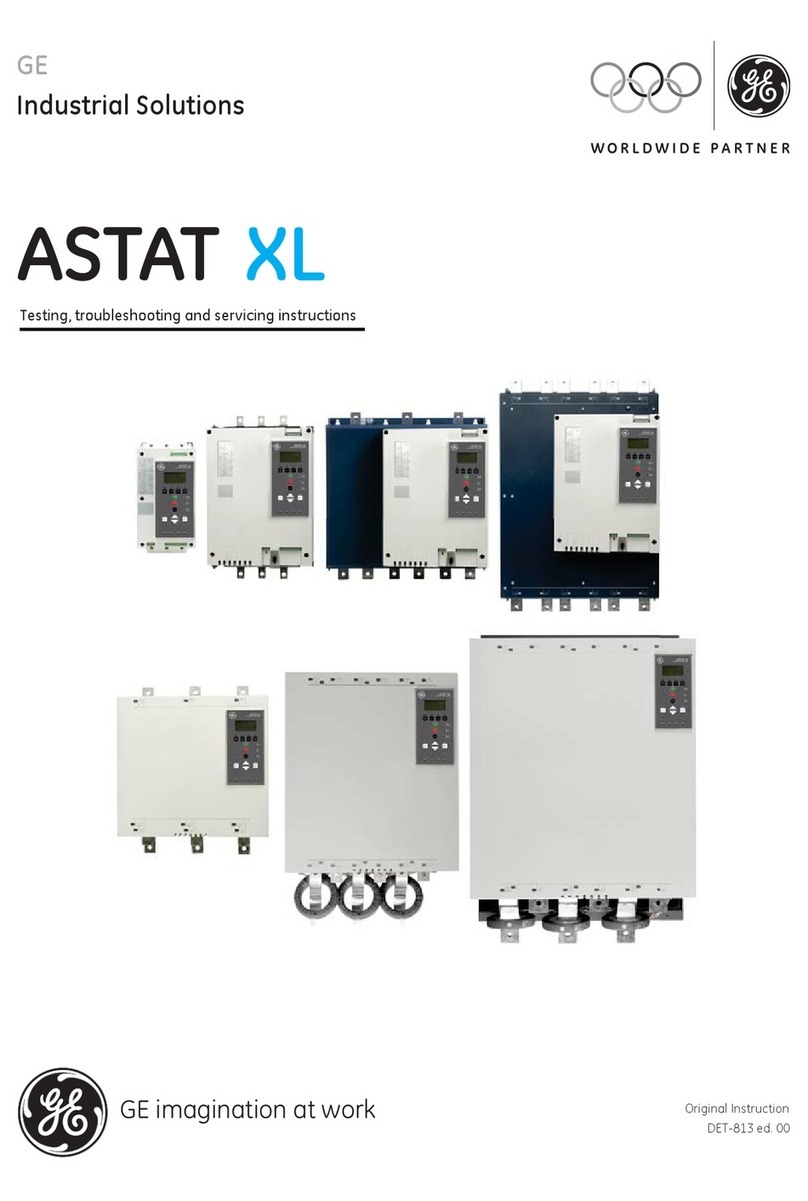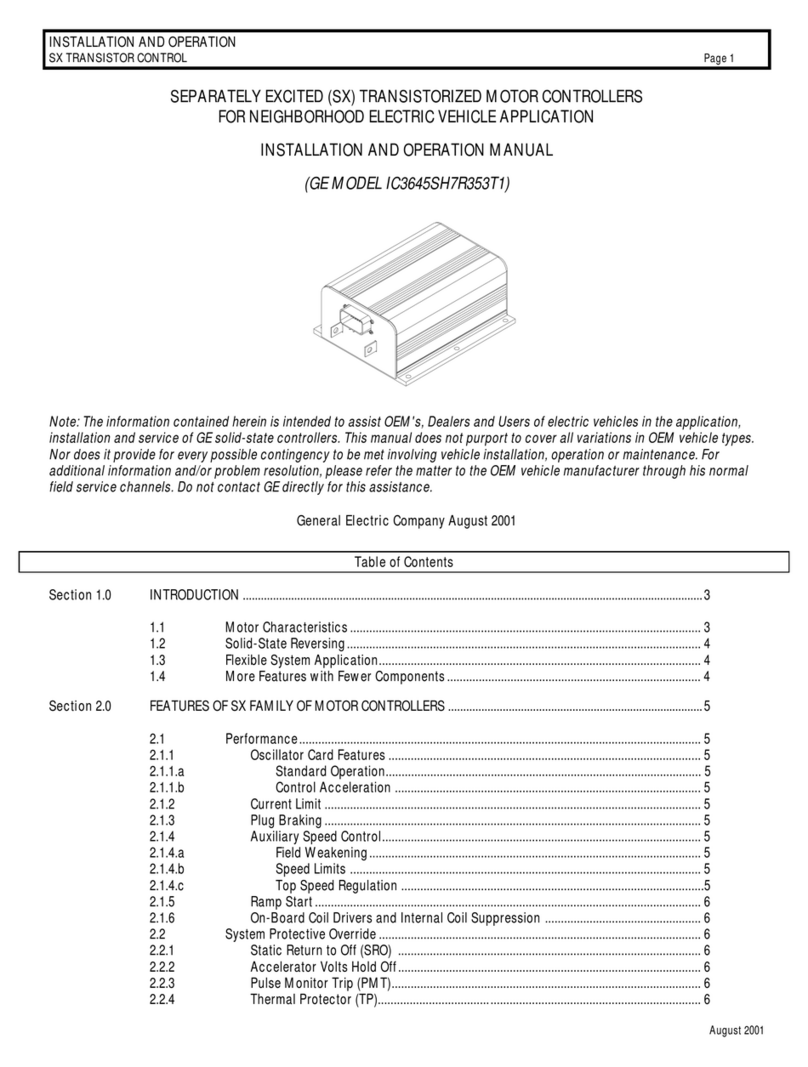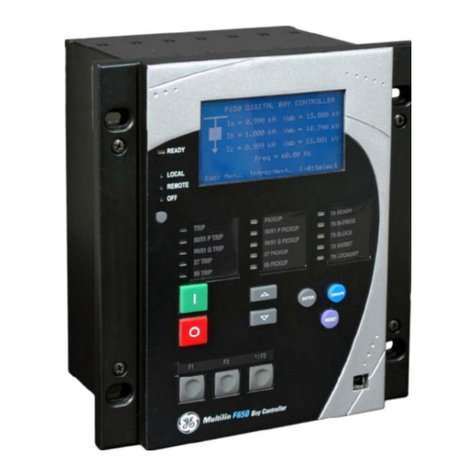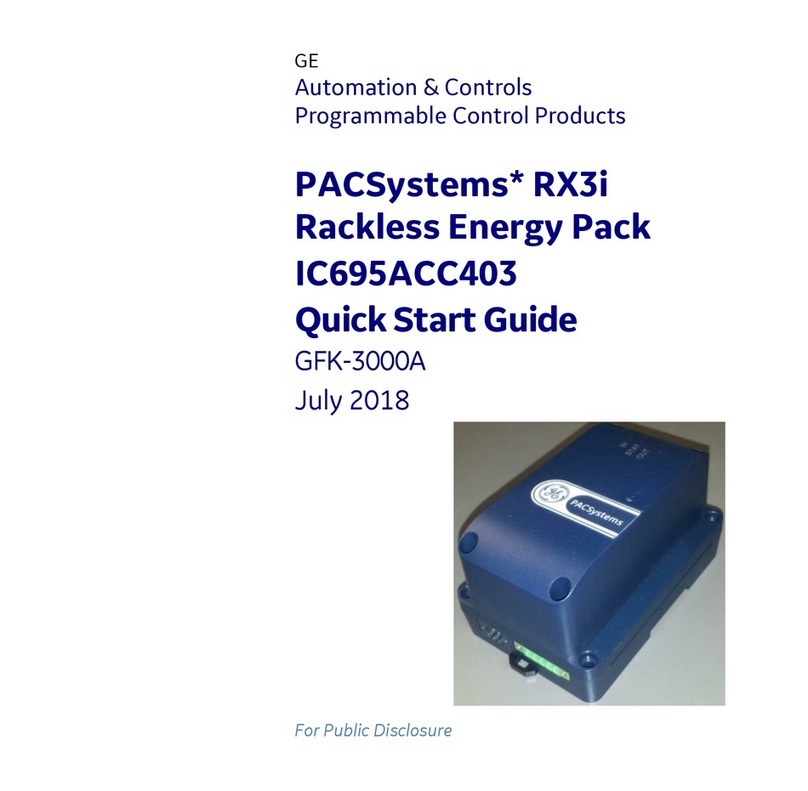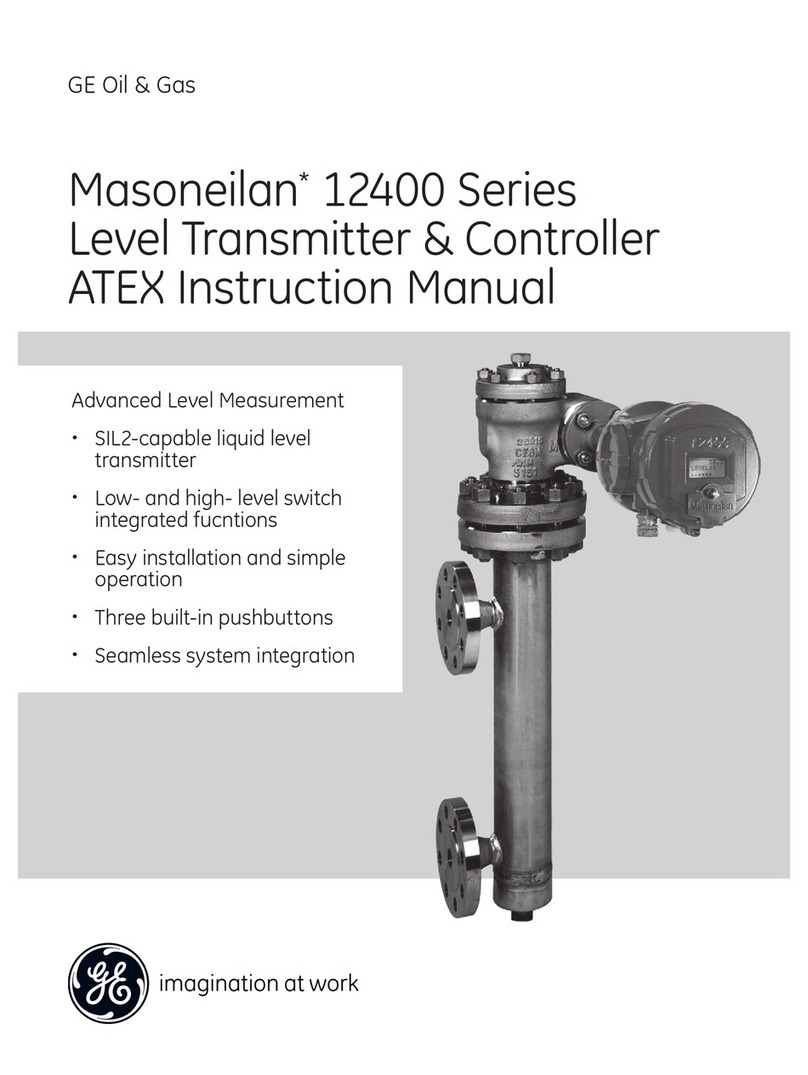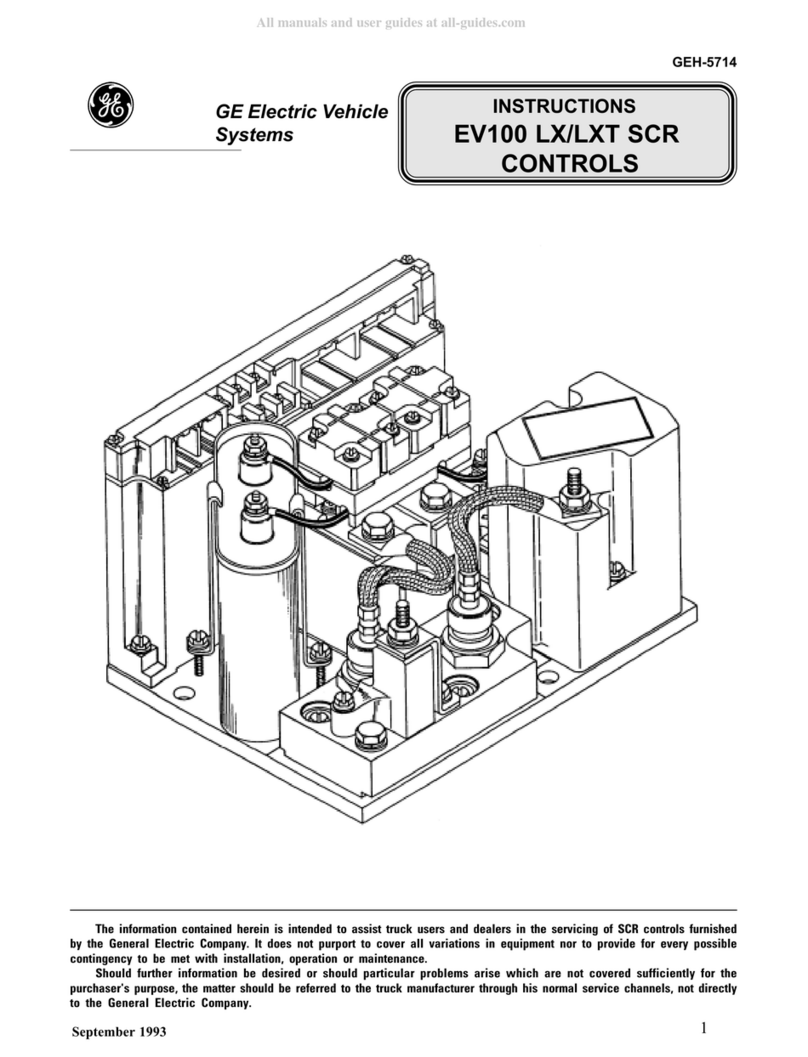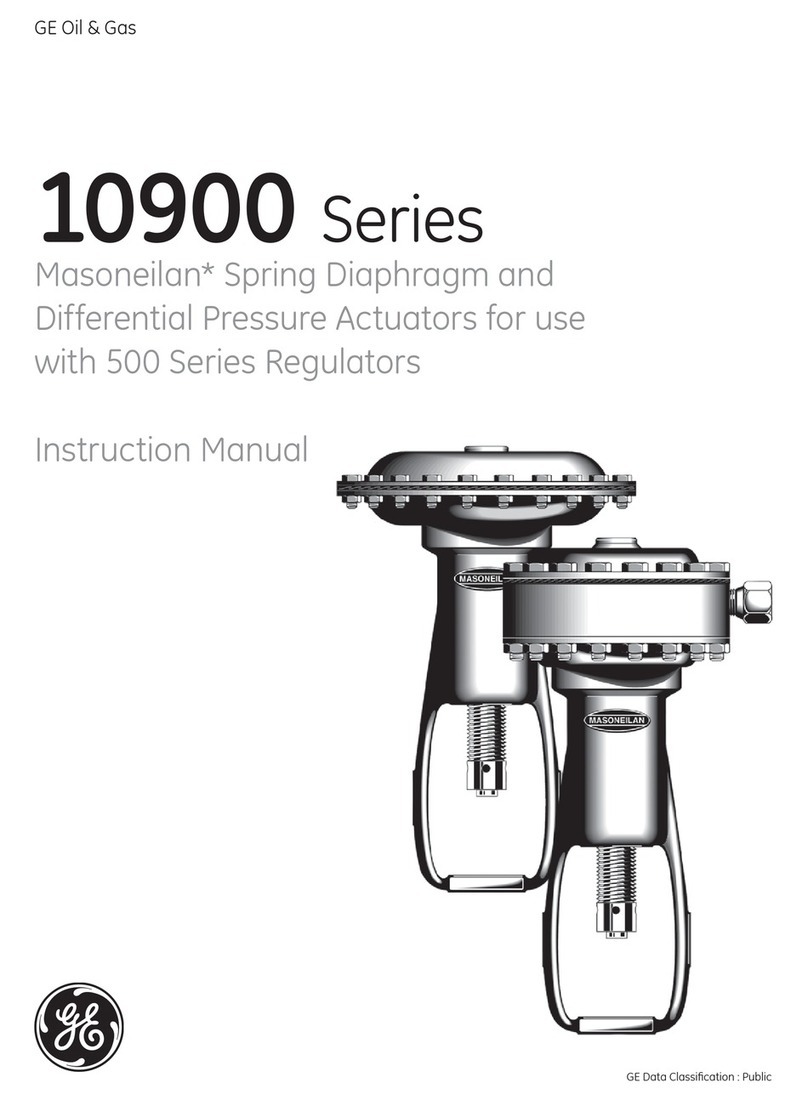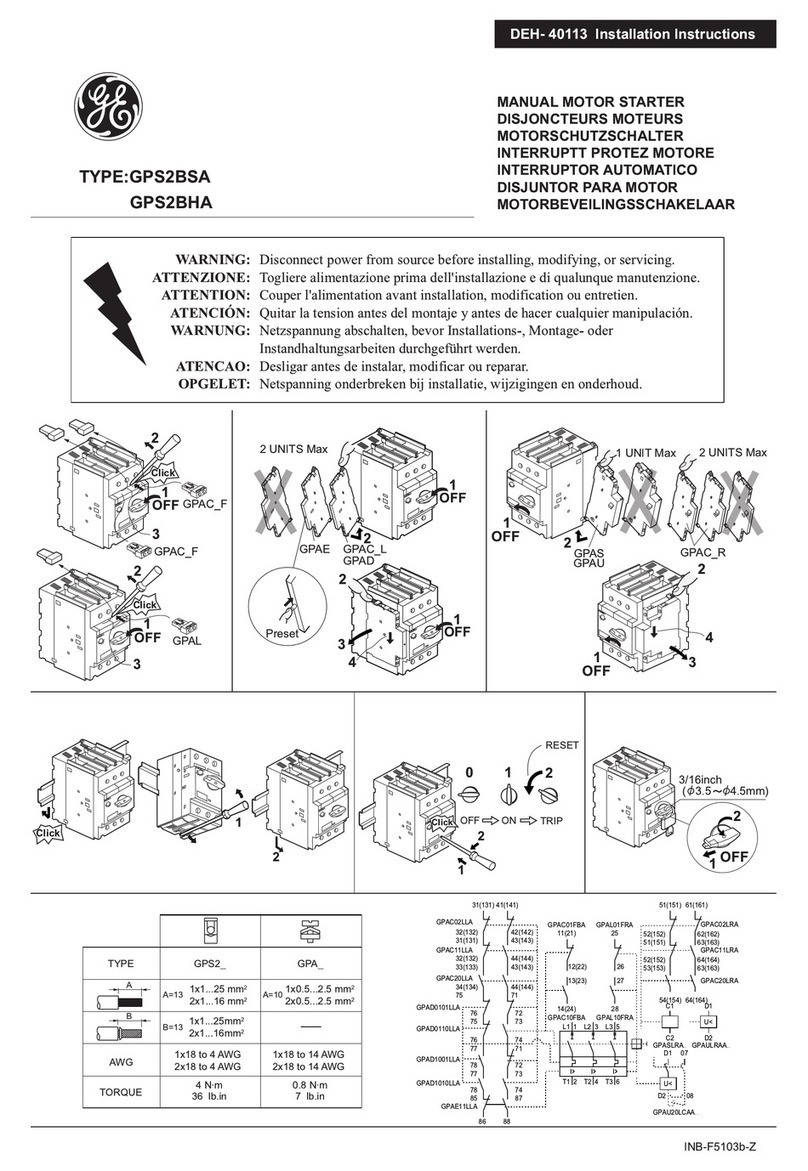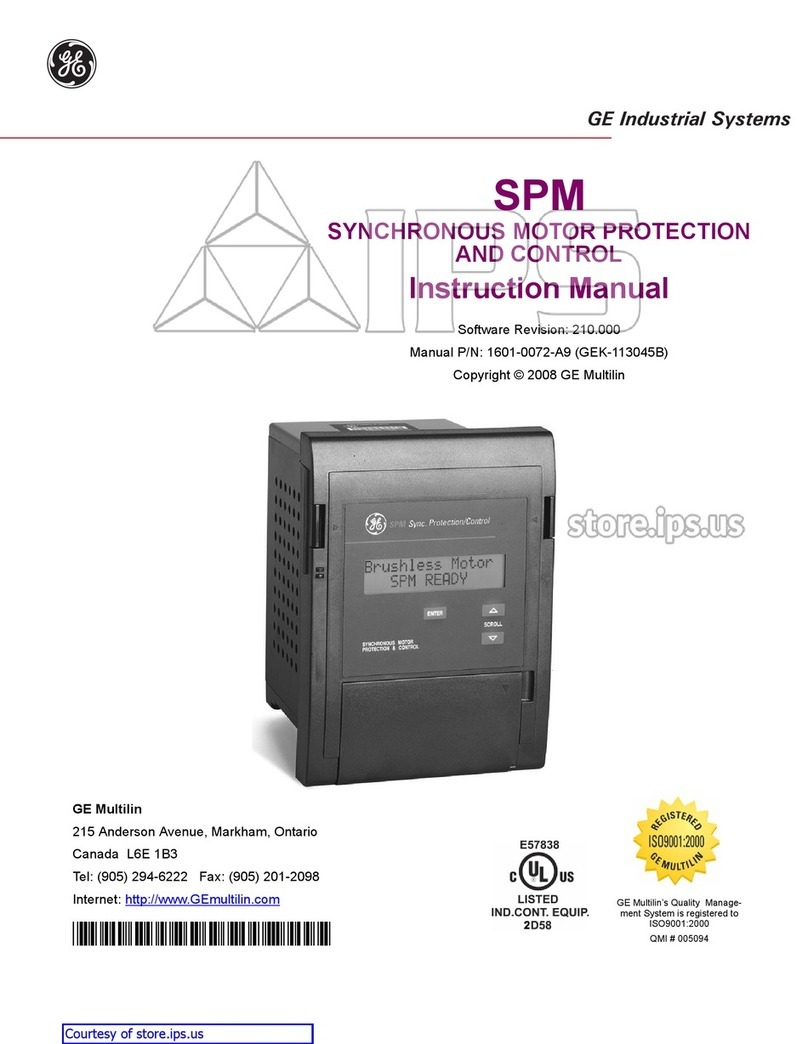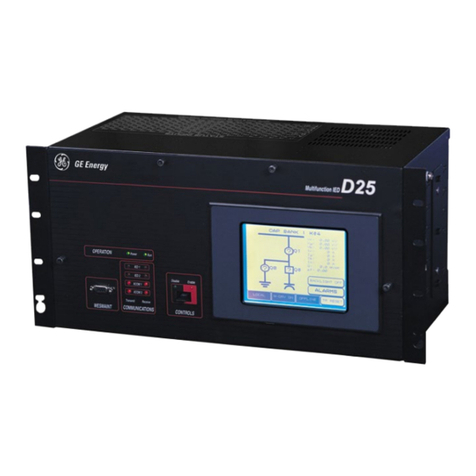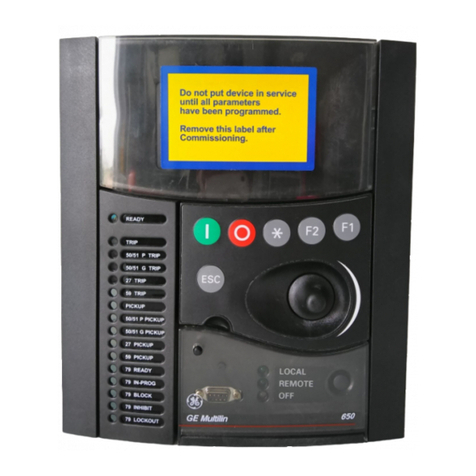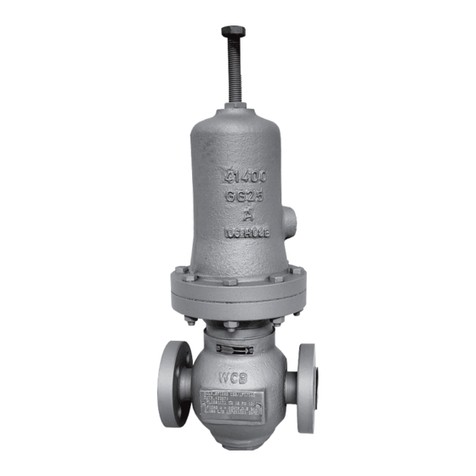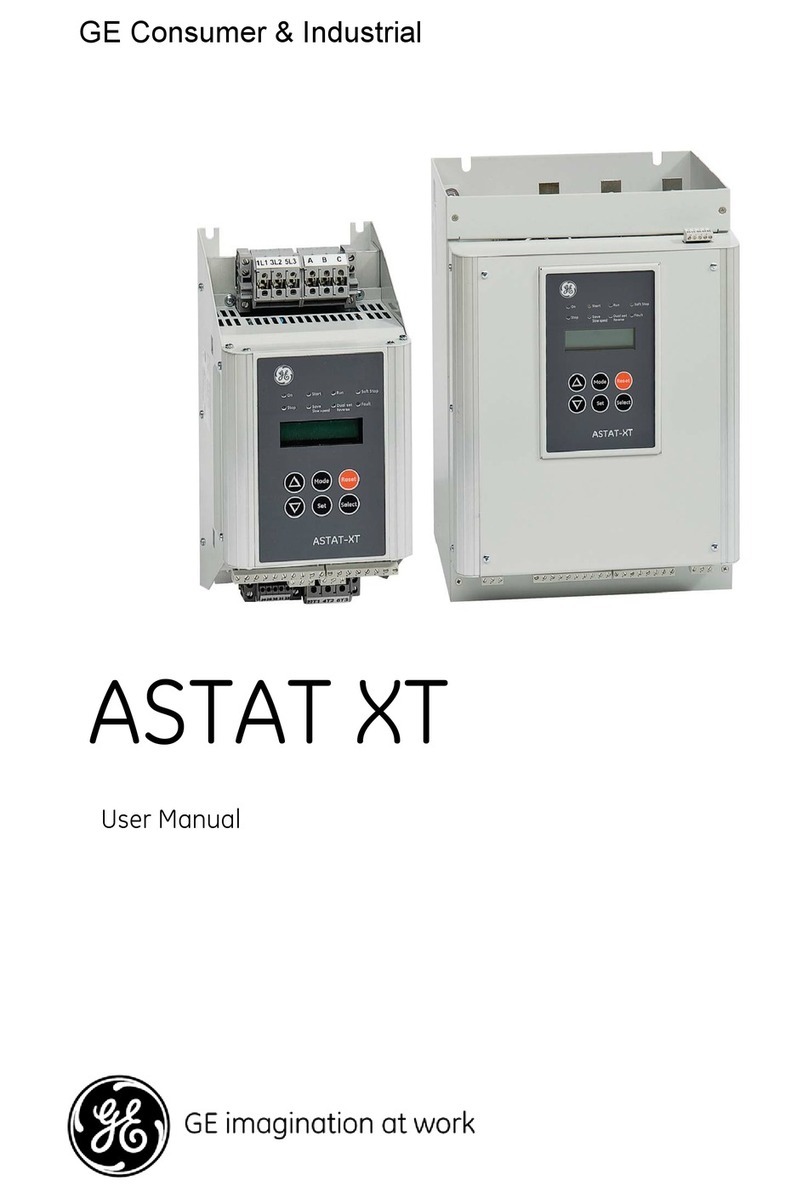
BASIC OPERATION AND FEATURES
SX TRANSISTOR CONTROL Page 5
April 2002
Section 2.1.1 Oscillator Card Features
Section 2.1.1.a Standard Operation
The oscillator section of thecard has two adjustable
features, creep speed and minimum field current. With the
accelerator at maximum ohms or volts, the creep speed
can be adjusted by Function 2 of theHandset or a trimpot.
The field control section allows the adjustmentof the field
weakening level in order to set thetop speed of the motor.
This top speed function (Minimum Field Current) is enabled
when the armature current is less than the value set by
Function 24 and the accelerator inputvoltage is less than 1
volt. Top Speed can beadjusted by Function 7 of the
Handset or a trimpot.
The % ON-time has a range of approximately 0 to 100
percent. The SX controllers operate at a constant
frequency and the% ON-timeis controlled by the pulse
width ofthe voltage/current applied to the motor circuits.
Section 2.1.1.b Control Acceleration
This feature allows for adjustment of the rate of time it
takes for the control to accelerate to 100% applied battery
voltage to themotor on hard acceleration. Armature C/A is
adjusted by Function 3 from 0.1 to 22 seconds.
Section 2.1.2 Current Limit
This circuit monitors motor current by utilizing sensors in
series with the armature and field windings. The
information detected by the sensor is fed backto the card
so that current may be limited to a preset value. Ifheavy
load currents are detected, this circuitoverrides the
oscillator and limits the average currentto a value set by
Function 4 and Function 8 of the Handset. TheC/L setting is
based on the maximum thermal rating of the control.
Because of the flyback current through 3REC, the motor
current isusually greater than battery current, except at
100% ON time.
Section 2.1.3 Plug Braking
Slow down is accomplished when reversing direction by
providing a small amount of retarding torque for
deceleration. If the vehicle is moving, and the directional
lever ismoved from onedirection to the other, the plug
signal is initiated. Once the plug signal has been initiated,
the field is reversed, and the armature current is regulated
to the plug currentlimit. Armature currentis regulated by
increasing the field current as the vehicle slows down.
Once the field current reaches a preset value, set by
Function 10, and armature plug current can no longer be
maintained, thebraking function is canceled, and the
control reverts backto motoring.
All energy produced by themotor during plugging is
dumped as heatin the motor in this braking mode.
Section 2.1.4 Regenerative Braking to Base Speed
Regenerative braking to base speed is a function of the
vehicle motor design which slows the vehicle to a speed
corresponding to the base speed of the motor whenever the
start switch is opened or the control detects an overspeed
condition. The field FETs pulse on/off to regulate the
armature current. During regen, armature current is
allowed to flow from the armature through the current
sensor, the battery, the armature transistor and back to the
armature. All regen current is returned to thebattery.
Regen current will continue to flow until the speed of the
motor drops below its base speed, atwhich point the
vehicle will coast.
Section 2.1.5 Auxiliary Speed Control
Section 2.1.5.a Field Weakening
This function allows the adjustmentof the field weakening
level in order to set the top speed of the motor. The function
is enabled when the armature current is less than the value
set by Function 24. It is important to note that this function
is used to optimize motor and control performance, and this
setting will be determined by GE and OEM engineers at the
time of vehicle development. This setting must not be
changed by field personnel without the permission of the
OEM.
Section 2.1.5.b Speed Limits
This feature provides a means to limit motor speed by
controlling the armature voltage. The speed limit setting
provides a clamp on the accelerator voltage command,
limiting the conduction period of the armature FET’s.
There are two speed limit settings, reverse speed limit and
turf speed limit. When the reverse direction is selected, pin
5 is high, and the reverse speed limit will be used and the
turf switch is not checked by software. When the forward
direction is selected, pin 4 ishigh. The turf speed limit will
be enabled if the turf speed switch input, pin 6, is low.
The voltage to the motor armature will vary as a function of
the speed limit settings and the battery volts. The motor
speed will vary as a function of load and battery volts.
Section 2.1.5.c Top Speed Regulation
This feature requires a system tachometer. The standard
GE system tach is built into the motor and provides four
pulses per armaturerevolution. Once the control has been
calibrated to the vehicleparameters (gear ratio
and wheel rolling radius), using Function 1, speed can be
measured with a resolution of +/- 1 mph. When traveling
